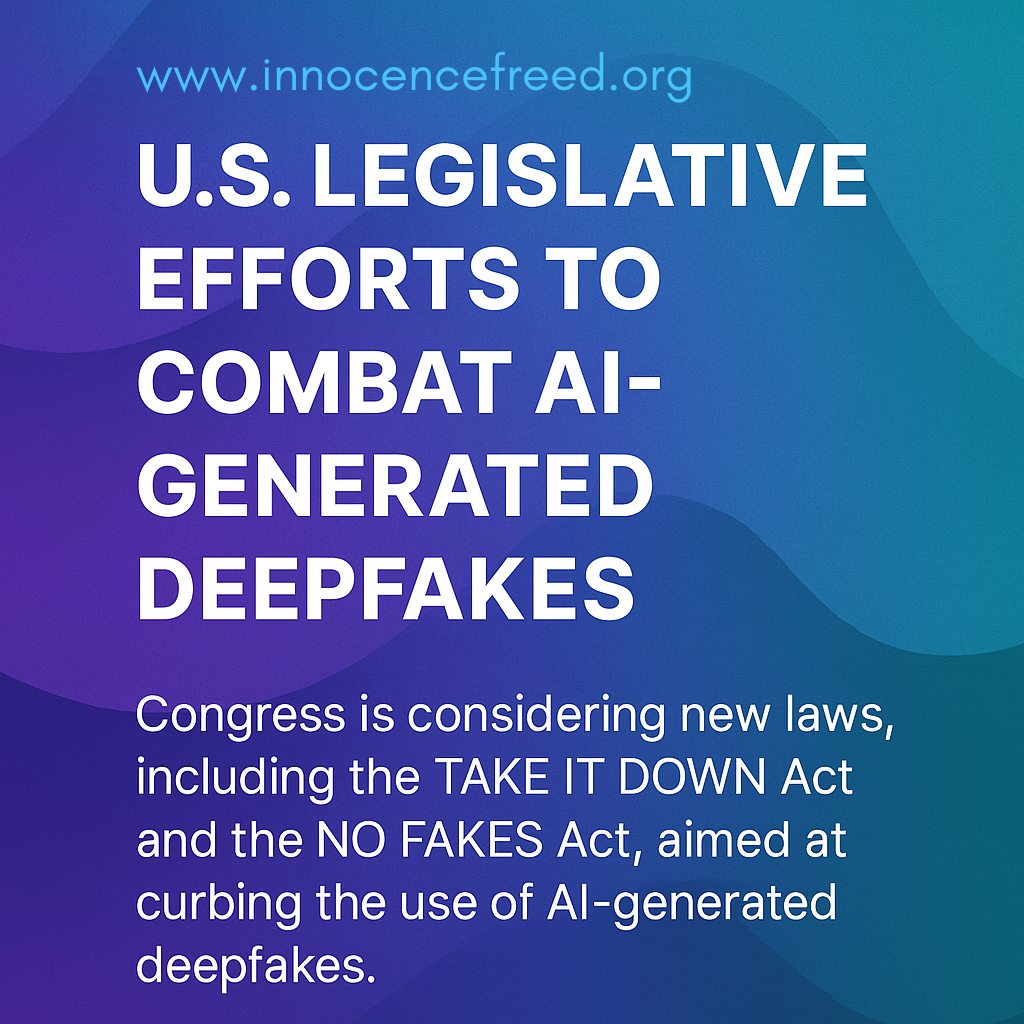
The Dark Side of AI
In an era where Artificial Intelligence (AI) is increasingly shaping the digital landscape, it brings both great opportunities and significant risks. One of the darker trends emerging is the use of AI to exploit vulnerable individuals, particularly survivors of sex trafficking. A growing network of Instagram accounts is using AI to steal content from real human creators and create fake personas that prey on the victimization of those marginalized groups. These AI-generated influencers are then manipulated to promote explicit content, including nudes, further exploiting these individuals for financial gain.
AI-Generated Influencers in the Context of Sex Trafficking
The use of AI to create seemingly real influencers with specific characteristics is an emerging phenomenon. These AI-driven accounts often steal photos and videos from real survivors of sex trafficking or other marginalized individuals. The content is then re-packaged to create the illusion of an influencer, often promoting adult content or solicitations that involve explicit sexual material. By using deepfake technology, AI can manipulate images and videos, making these fake personas appear more lifelike and authentic.
The underlying issue is the exploitation of vulnerable individuals, often survivors of sex trafficking, whose identities are stolen and distorted to generate engagement on social media platforms. These accounts are then used to generate profit, creating an even darker side to the already harmful world of online sex trafficking.
The Exploitation of Survivors of Sex Trafficking
The exploitation of AI in this way targets individuals who have already experienced unimaginable trauma. Survivors of sex trafficking, many of whom are already stigmatized or marginalized by society, are often left powerless as their images are stolen, manipulated, and used to create fake personas. These AI-generated personas, designed to appear as though they have Down syndrome or other vulnerabilities, are then used to promote illegal activities such as the solicitation of nudes, further violating and degrading the individual behind the image.
This form of exploitation is not only a violation of privacy and dignity but also a serious form of trafficking. The perpetrators behind these accounts are using AI to manipulate and harm vulnerable individuals for financial gain, all while masking the true nature of their crimes behind digital avatars.
The Role of AI and Deepfake Technology in Trafficking
Deepfake technology is a tool that allows for the manipulation of images and videos, making it possible to create highly realistic depictions of individuals doing or saying things they never actually did. While deepfakes can be used in entertainment and positive creative projects, their application in sex trafficking is deeply troubling.
By using deepfake technology, traffickers can fabricate fake faces and identities for digital influencers, creating an illusion of authenticity that is difficult for social media users to recognize. The AI-driven manipulation of these images is often so seamless that followers may believe they are interacting with a real person, all while unknowingly supporting a trafficking scheme.
This exploitation is especially dangerous because it deceives the public, turning real individuals into commodities and reducing their dignity to mere digital assets. As AI advances, the ease with which traffickers can manipulate and create new personas means that these schemes will only grow in scale and sophistication, making it harder to identify and stop the exploitation.
The Dangers of AI-Driven Sex Trafficking
The emergence of AI-driven exploitation in sex trafficking is not just a technological issue but a deeply human one. Survivors of trafficking are often already vulnerable, struggling with trauma, isolation, and societal stigma. The use of AI to perpetuate their victimization adds another layer of harm, trapping them in a digital world where their identities are stolen, distorted, and monetized for profit.
For those who follow these AI-generated accounts, the emotional manipulation can be profound. Traffickers take advantage of followers’ empathy, making them believe they are supporting a cause or individual in need, only to discover that they have been duped into perpetuating an illegal and harmful operation.
The Responsibility of Social Media Platforms and Governments
Social media platforms like Instagram have a responsibility to take a more active role in addressing AI-driven exploitation. The use of AI to create fake influencers who are involved in illegal activities, such as sex trafficking, should be met with swift action, including the removal of these accounts and the investigation of the individuals behind them. Additionally, social media companies must work with law enforcement and anti-trafficking organizations to develop effective systems for identifying and preventing this type of abuse.
Governments and lawmakers must also step in to regulate the use of AI, especially when it comes to online exploitation. By implementing stricter regulations for AI-generated content and deepfake technology, they can help prevent the exploitation of vulnerable individuals and hold traffickers accountable for their actions.
Protecting Survivors and Content Creators
As AI becomes more advanced, the digital world must ensure that ethical standards are upheld. Content creators, particularly survivors of sex trafficking, must be protected from having their images stolen, manipulated, and used for harmful purposes. Survivors of trafficking need a safe space to heal and rebuild their lives without the threat of further exploitation.
Furthermore, public awareness must be raised to help people recognize the signs of AI-driven exploitation. Followers of online influencers should be cautious about the authenticity of profiles, especially those that appear to be using vulnerability as a marketing tactic. We must all work together to ensure that AI is used ethically, protecting the most vulnerable members of our society.
The Need for Ethical AI Use
The use of AI in the exploitation of survivors of sex trafficking is a clear example of how technology can be used for harm rather than good. These AI-generated personas prey on the most vulnerable, turning their trauma into a commodity for profit. To protect survivors and content creators, we must prioritize responsible AI use, advocate for stricter regulations, and hold those who exploit these technologies accountable. Only then can we ensure that the digital space is a place of safety, dignity, and respect for all individuals.
U.S. Legislative Efforts to Combat AI-Driven Exploitation and Trafficking
In response to the alarming rise of AI-generated deepfakes used to exploit vulnerable individuals, including those with Down syndrome, U.S. lawmakers are taking decisive action. These AI-generated personas are often manipulated to promote explicit content, including nudes, further exploiting these individuals for financial gain. To address this issue, several legislative measures have been introduced at both the federal and state levels.
🏛️ Federal Legislation
- TAKE IT DOWN Act
A significant development is the bipartisan TAKE IT DOWN Act, co-sponsored by Senators Ted Cruz (R-TX) and Amy Klobuchar (D-MN). This bill, which passed the Senate unanimously in February 2025, aims to criminalize the publication of non-consensual intimate imagery (NCII), including AI-generated deepfakes. It mandates that platforms remove such content within 48 hours of receiving a notice from a victim. The bill also imposes penalties for those who knowingly spread this material. A companion bill has been introduced in the House by Representatives María Elvira Salazar (R-FL) and Madeleine Dean (D-PA) and is currently under consideration in the Commerce Committee. Dean’s Website+8The Washington Post+8Mintz+8The Washington Post+5Broadband Breakfast+5Dean’s Website+5
- NO FAKES Act
Introduced by Representatives Madeleine Dean (D-PA) and María Elvira Salazar (R-FL), the NO FAKES Act seeks to protect individuals from AI-generated deepfakes. This bipartisan legislation defines a person’s right to control their voice and likeness, aiming to prevent unauthorized use of AI to create exploitative content. The bill balances the need for innovation with the protection of privacy and dignity. New York Post+2Dean’s Website+2Broadband Breakfast+2
🏛️ State-Level Initiatives
At the state level, Minnesota has proposed legislation to combat the creation of explicit images using “nudification” AI technology without consent. The bill seeks to impose civil penalties on companies that run these technologies, with fines up to $500,000 per violation. This initiative reflects the state’s effort to tackle pressing concerns and enhance public safety. AP News+1NewsLooks+1Folsom Times
⚖️ Challenges and Considerations
While these legislative efforts are commendable, they also raise important questions about the balance between protecting individuals from exploitation and safeguarding free expression. Critics argue that the TAKE IT DOWN Act could lead to overreach, potentially infringing on user privacy and freedom of expression. Concerns include the lack of safeguards against false reports and the absence of an appeals process for removed content. Digital rights groups caution that the bill’s notice and takedown mechanism might result in the removal of content that is neither illegal nor exploitative. New York Post+8Time+8The Washington Post+8The Washington Post
🔍 Conclusion
The U.S. is making strides in addressing the misuse of AI in creating exploitative content. Legislative measures like the TAKE IT DOWN Act and the NO FAKES Act represent significant steps toward protecting individuals from AI-driven exploitation. However, it is crucial to ensure that these laws are crafted carefully to balance protection with the preservation of fundamental rights. Ongoing dialogue and scrutiny will be essential as these bills move through the legislative process.Dean’s Website
Written By: Julie A. Shrader
Founder and CEO of Innocence Freed

